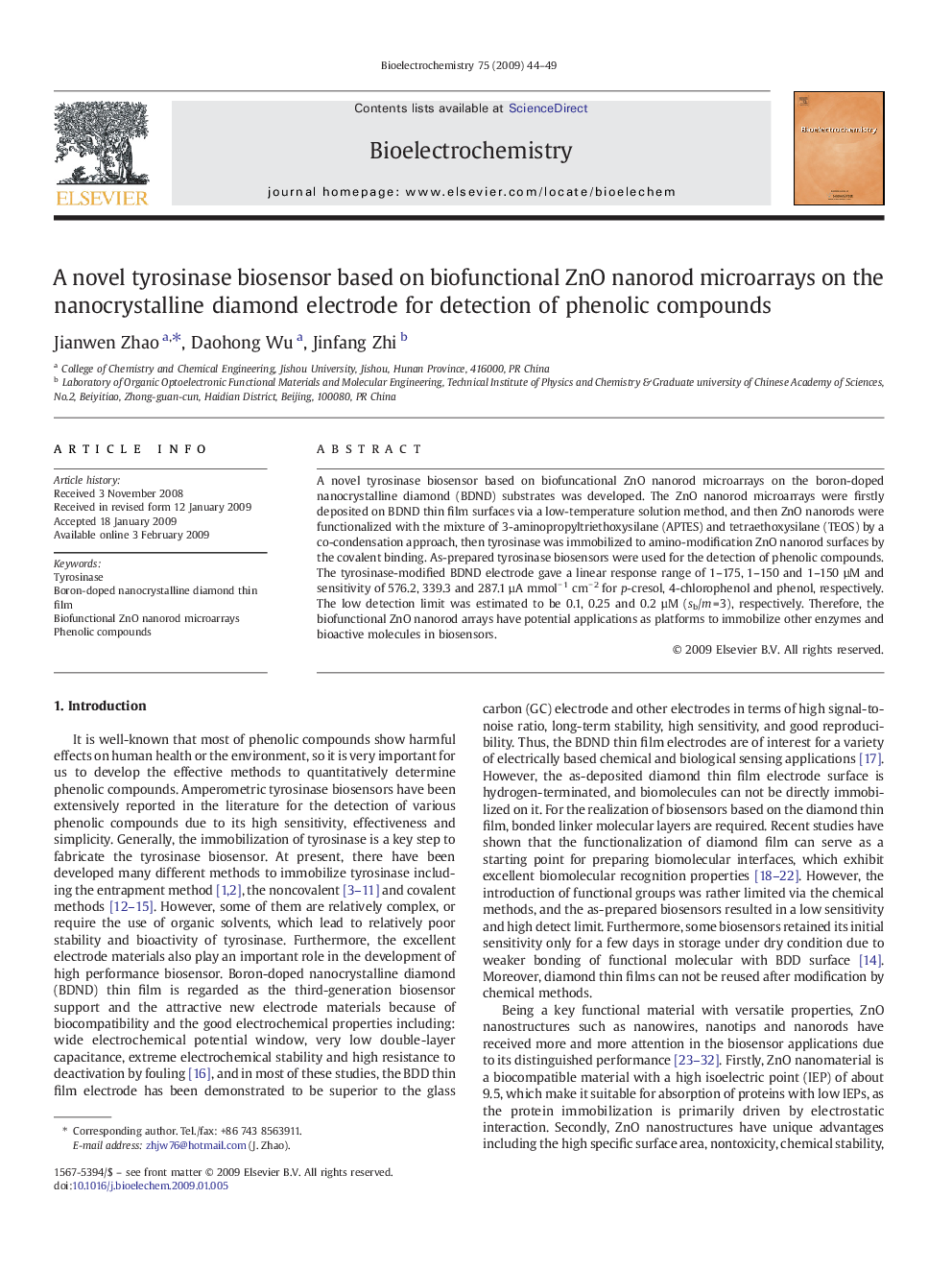| Article ID | Journal | Published Year | Pages | File Type |
|---|---|---|---|---|
| 1268894 | Bioelectrochemistry | 2009 | 6 Pages |
A novel tyrosinase biosensor based on biofuncational ZnO nanorod microarrays on the boron-doped nanocrystalline diamond (BDND) substrates was developed. The ZnO nanorod microarrays were firstly deposited on BDND thin film surfaces via a low-temperature solution method, and then ZnO nanorods were functionalized with the mixture of 3-aminopropyltriethoxysilane (APTES) and tetraethoxysilane (TEOS) by a co-condensation approach, then tyrosinase was immobilized to amino-modification ZnO nanorod surfaces by the covalent binding. As-prepared tyrosinase biosensors were used for the detection of phenolic compounds. The tyrosinase-modified BDND electrode gave a linear response range of 1–175, 1–150 and 1–150 µM and sensitivity of 576.2, 339.3 and 287.1 µA mmol− 1 cm− 2 for p-cresol, 4-chlorophenol and phenol, respectively. The low detection limit was estimated to be 0.1, 0.25 and 0.2 µM (sb/m = 3), respectively. Therefore, the biofunctional ZnO nanorod arrays have potential applications as platforms to immobilize other enzymes and bioactive molecules in biosensors.
